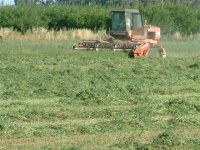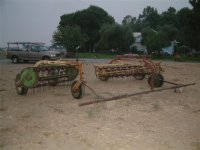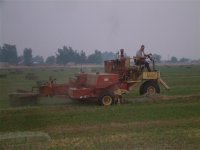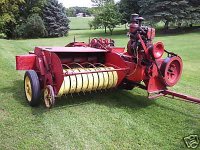flusher
Super Member
- Joined
- Jun 4, 2005
- Messages
- 7,572
- Location
- Sacramento
- Tractor
- Getting old. Sold the ranch. Sold the tractors. Moved back to the city.
No tedder.
Well, I asked, and you guys have given me lots of info & sound advice.:thumbsup:
Im now more terrified than ever :laughing:, This may be too much for my first year. I think i will see if I can find someone to take off of the bulk of the hay, and Ill deal with just one of the fields for now.
Assisting someone locally is good advice too. I know someone further south, where they hay earlier in the season, that may be a good idea to get the experience several weeks in advance of when I need to start.
Just to complete my input to this discussion, I have several neighbors who grow hay crops on large acreage--one has 30 acres of irrigated alfalfa; another dry-farms about 200 acres of oats or beardless wheat (he alternates year to year). Both of them use self-propelled Hesston windrowers (aka swathers) to mow their crops

The alfalfa windrows are combined using a dual bar rake setup.

A self-propelled 3-twine NH baler does the alfalfa (the engine is a Deutz diesel, the front wheel is driven by a hydraulic motor)

Baling on the 200-acres is done with a towed baler that has it's own engine (like this NH66 baler with a 2-cyl Wisconsin gas engine)

The nice feature of these balers is that the baler operation (70-80 strokes) per minute is completely independent of the tractor so you can control ground speed with the foot throttle on the tractor without changing the baler rpm. Very helpful when the windrows are not uniform.
